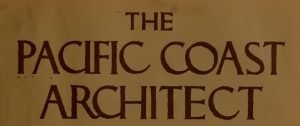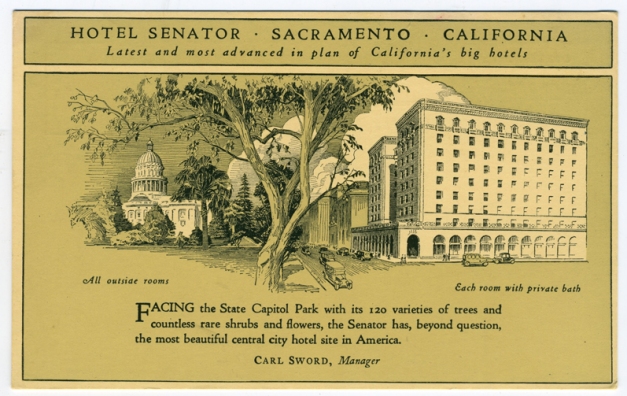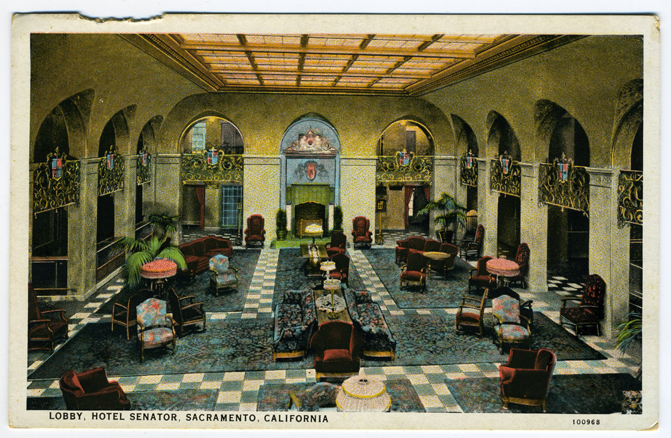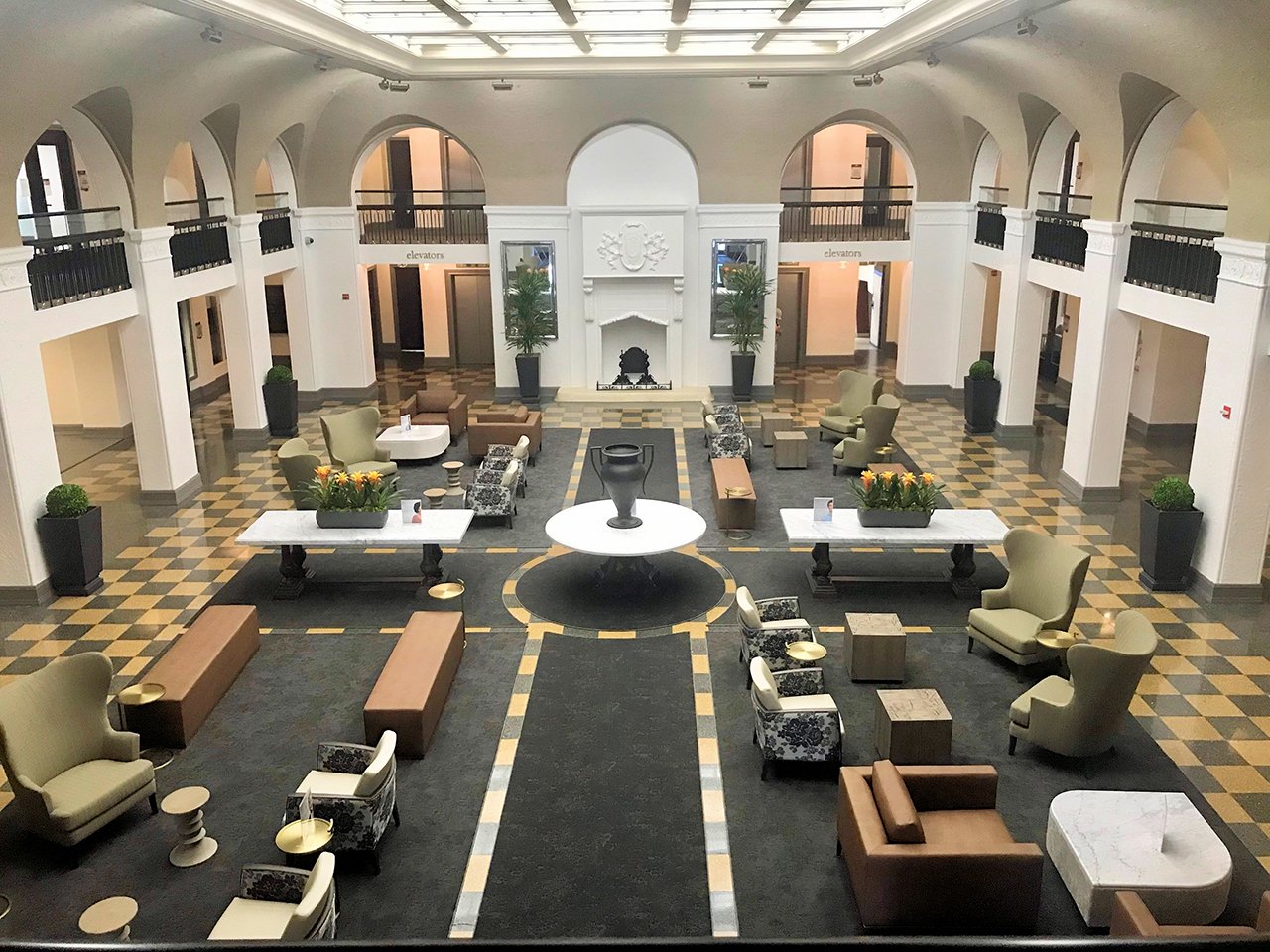From Wikipedia, the free encyclopedia
The Senator Hotel (officially Hotel Senator) (1924–1979) was a nine-story, 400-room Italian Renaissance-style hotel in Sacramento, California located at 12th and L streets across from the California State Capitol building that served as a nexus of California political and social activity for more than 50 years.

See The Senator Profiled in the
October 1924 edition of The Pacific Coast Architect:
Opened in 1924, the Senator Hotel was where Arthur Samish, one of the most influential and powerful individual lobbyists in the history of California, maintained a suite during the 1930s and 1940s. President Gerald Ford spent the night at the Senator Hotel before the September 5, 1975, assassination attempt on him by cultist Manson family disciple Squeaky Fromme.

Although the Senator Hotel was listed on the National Register of Historic Places in May 1979, the hotel was closed two months later and shuttered with panels placed over the windows that same year. The structure was renovated and then reopened in 1983 as an office building under the name Senator Hotel Office Building, giving lobbyists short-walking-distance access to California’s state politicians.
History
The Senator Hotel’s 1920s opening came at an important time in Sacramento, California. The city’s current charter was adopted by voters in 1920, establishing a city council-and-manager form of government still used today. In 1923, voters approved the creation the Sacramento Municipal Utility District (SMUD), a customer-owned utility that provides electricity to Sacramento County. The year following the creation of SMUD, 1924, brought several events in Sacramento: Standard Oil executive Verne McGeorge established McGeorge School of Law, American department store Weinstock & Lubin opened at 12th and K street, Sacramento’s drinking water became filtered and treated drinking water, and Sacramento boxer Georgie Lee fought Francisco Guilledo, a Filipino professional boxer known as Pancho Villa, at Sacramento’s L Street Auditorium on March 21 for the flyweight boxing championship of the world.
Designed by architect Kenneth MacDonald with collaboration from theater architect G. Albert Lansburgh, the $2 million Senator Hotel was built in 1923–1924 and opened in late August 1924 at 1121 L Street to provide lodging and meeting rooms to California’s state politicians and others having government and commercial business in Sacramento. Along with other 12th Street structures, such as the state Capitol, Francesca Apartments, erected in 1924, Weinstock’s department store, and a Bank of America, the Senator Hotel became part of one of California’s then-newest and trendiest commercial shopping centers.
Silent film star Buster Keaton stayed at the hotel with his production company in the summer of 1927 while filming the 1928 feature-length comedy Steamboat Bill, Jr. A few months later, adventure pilot Charles Lindbergh was honored in the hotel’s Florentine Room for his May 1927 historic flight from New York to Paris, France. From the 1930s to the 1950s, the Senator Hotel served as the center of political activity in the capital. Legislators and lobbyists would sit in wicker chairs in the building’s lobby, making one political deal after another deal regarding oil, liquor, railroading, electric utilities, and other areas. Max Baer, a Sacramento boxer and one-time Heavyweight Champion of the World, frequented the hotel in the 1930s where he “showed off his latest beauty” in the Senator Hotel lobby. Arthur Samish, one of the most influential and powerful individual lobbyists in the history of California, maintained a lavish suite at the hotel during the 1930s and 1940s.
Dr Martin Luther King Jr stayed at the Senator Hotel. In the 1940s, American author Joan Didion auditioned in the hotel for a Pasadena Playhouse theater part at a casting call and Pulitzer Prize-winning dramatist and author William Saroyan frequented the hotel bar. In 1954, Washington Redskins coach Curly Lambeau was fired after arguing with that professional football team’s owner in the Senator Hotel lobby. In the late 1950s, Stan Kenton and his controversial jazz orchestra held concerts in the Empire Room of the Senator Hotel. Throughout the 1950s, 1960s and 1970s, politicians such as Governors Jerry Brown and Ronald Reagan and Presidents Richard Nixon and Jimmy Carter spent time in the hotel. President Gerald Ford spent the night at the Senator Hotel before the September 5, 1975 assassination attempt on him by Manson family disciple Squeaky Fromme.
In early 1979, retired Major League Baseball player Mickey Mantle received $2,000 to attend the National Association of Health Underwriters of Sacramento convention at the Senator Hotel. In May 1979, the Senator Hotel was listed on the National Register of Historic Places, in part due to its early 20th century adaptation of parts barrowed from Palazzo Farnese and other Italian Renaissance motifs. Two months later, in July, the hotel was closed down because of 79 fire-safety and building-code violations. The building then was shuttered with panels placed over windows. That left Sacramento as the only city in the 25 largest metropolitan regions in the United States without a major historic hotel. Sacramento developer Marvin “Buzz” Oates purchased the Senator Hotel in November 1979 for $2.5 million and spent $15 million over the next eight years renovating the building. Oates reopened the building an office building in 1983 under the name “Senator Hotel Office Building” to give lobbyists short-distance access to California’s state politicians.
For more, read the full entry at wikipedia.org


